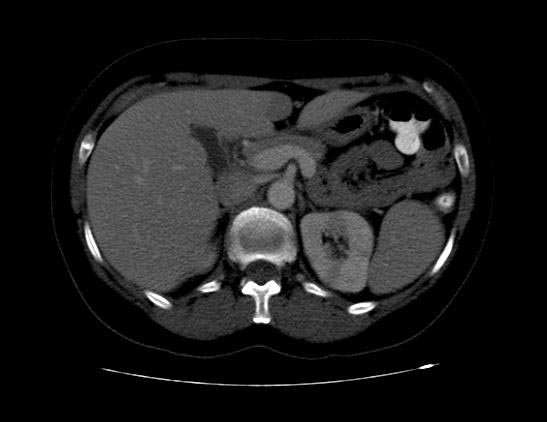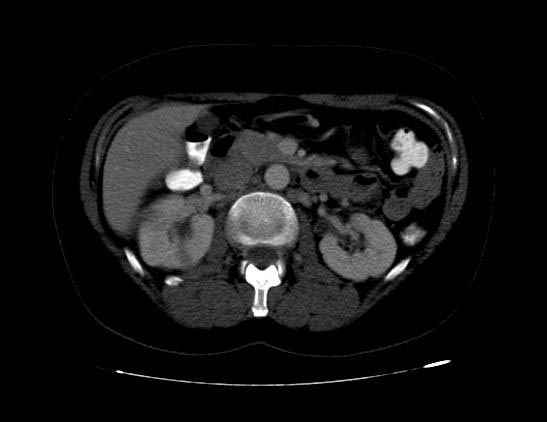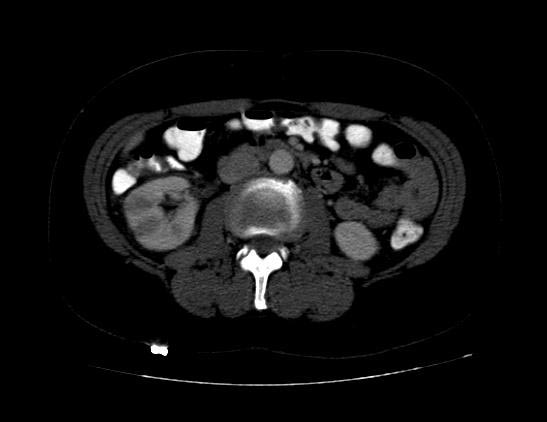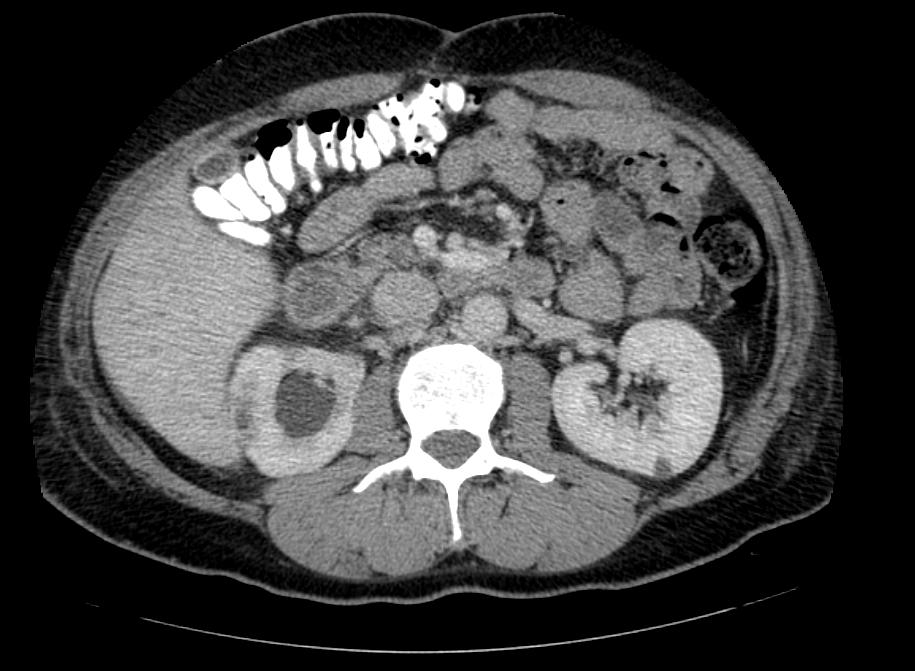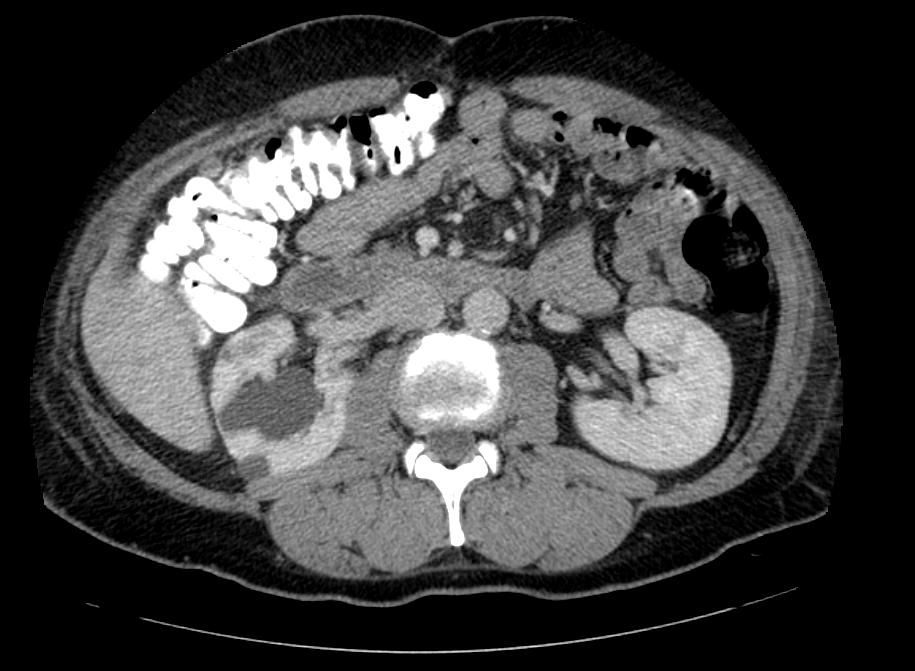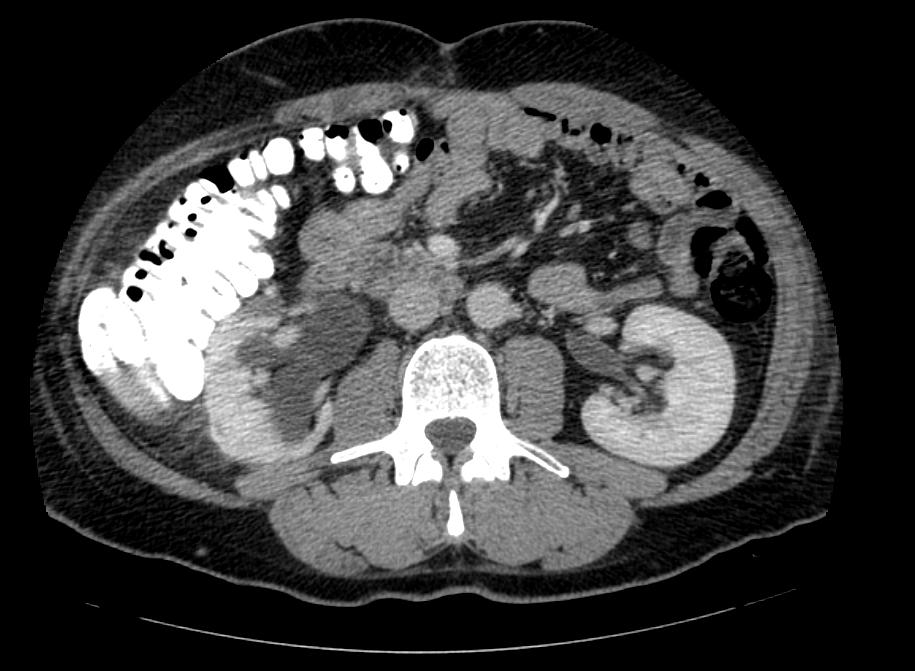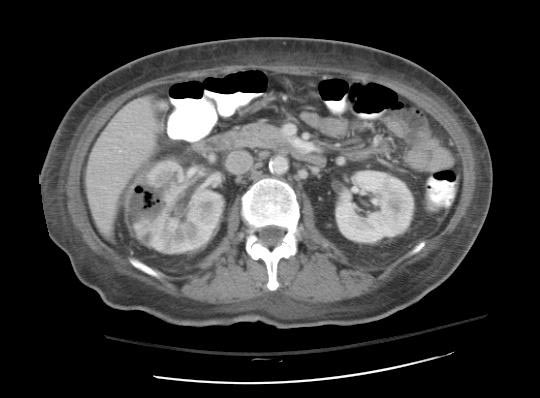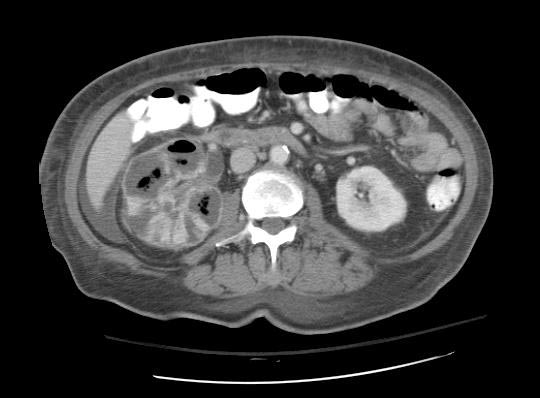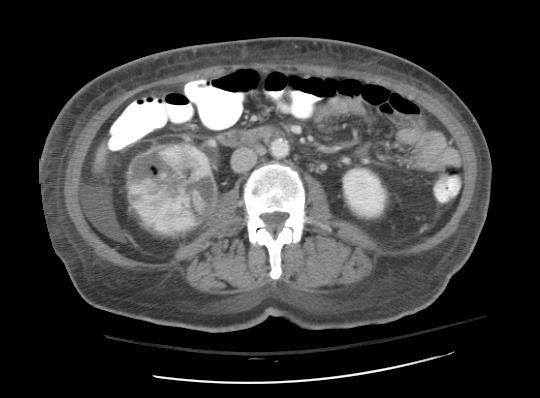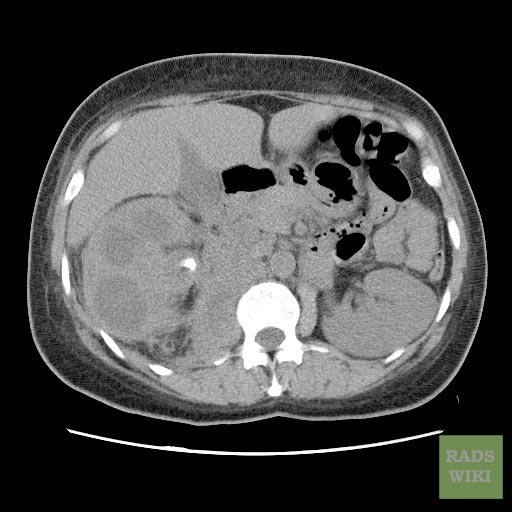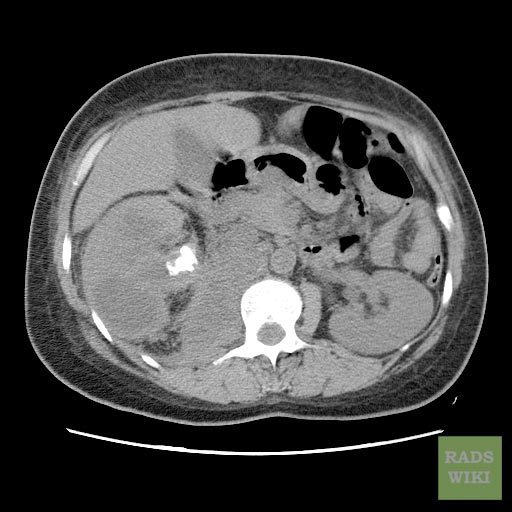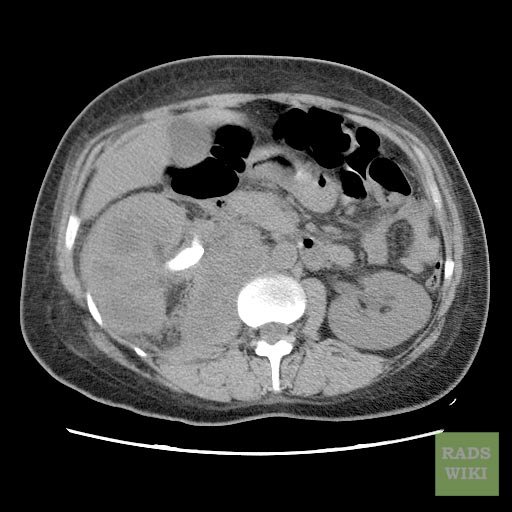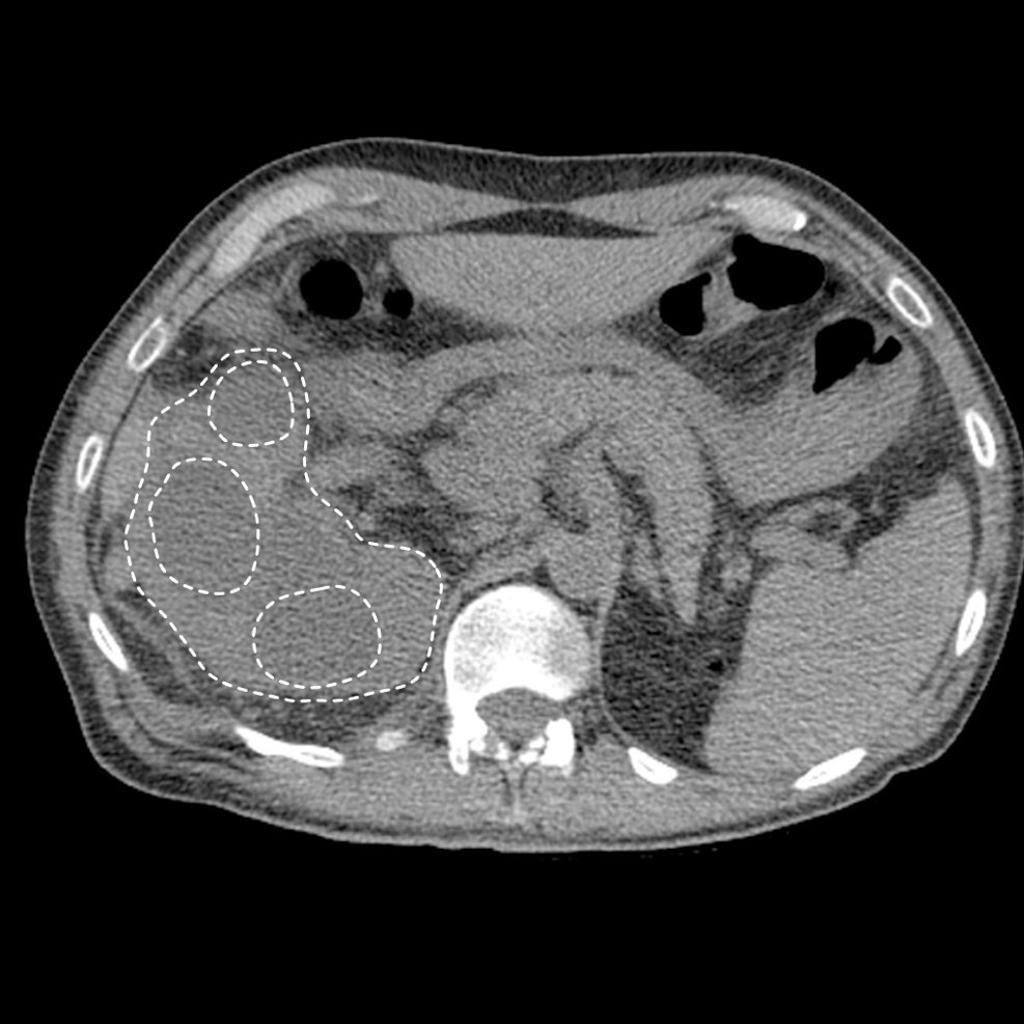Pyelonephritis CT scan: Difference between revisions
Usama Talib (talk | contribs) |
Usama Talib (talk | contribs) |
||
| Line 45: | Line 45: | ||
Image:Xanthogranulomatous pyelonephritis 002.jpg|CT image demonstrates right xanthogranulomatous pyelonephritis | Image:Xanthogranulomatous pyelonephritis 002.jpg|CT image demonstrates right xanthogranulomatous pyelonephritis | ||
Image:Xanthogranulomatous pyelonephritis 003.jpg|CT image demonstrates right xanthogranulomatous pyelonephritis | Image:Xanthogranulomatous pyelonephritis 003.jpg|CT image demonstrates right xanthogranulomatous pyelonephritis | ||
Image:Xanthogranulomatous-pyelonephritis-2.jpg|CT image demonstrates right xanthogranuomatous pyelonephritis with dilated calyces | |||
</gallery> | </gallery> | ||
Revision as of 15:25, 27 January 2017
|
Pyelonephritis Microchapters |
|
Diagnosis |
|
Treatment |
|
Case Studies |
|
Pyelonephritis CT scan On the Web |
|
American Roentgen Ray Society Images of Pyelonephritis CT scan |
|
Risk calculators and risk factors for Pyelonephritis CT scan |
Editor-In-Chief: C. Michael Gibson, M.S., M.D. [1]
PMID: 12848478 and 2651759 and 2388315 and 17318482 and 2798873
Overview
A CT scan can be used to detect pyelonephritis. [1][2]
CT
A CT scan usually shows[3]
- Round swollen kidneys
- Hypo-dense appearance
- Abscesses may air may not be present
Acute Pyelonephritis
-
CT: Acute pyelonephritis
-
CT: Acute pyelonephritis
-
CT: Acute pyelonephritis
Chronic Pyelonephritis
Imaging findings are characterized by renal scarring, atrophy and cortical thinning, hypertrophy of residual normal tissue, caliceal clubbing secondary to retraction of the papilla from overlying scar, thickening and dilatation of the caliceal system, and overall renal asymmetry. Images courtesy of RadsWiki
-
CT image demonstrates chronic pyelonephritis on the right
-
CT image demonstrates chronic pyelonephritis on the right
-
CT image demonstrates chronic pyelonephritis on the right
Emphysematous Pyelonephritis
- Additional evaluation with CT will confirm the presence and extent of parenchymal gas and will often allow identification of the source of obstruction when present.
- The use of intravenous contrast material will often reveal asymmetric renal enhancement or delayed excretion, and, during the nephrographic phase, will help identify areas of focal tissue necrosis or abscess formation.
-
CT: Emphysematous pyelonephritis
-
CT: Emphysematous pyelonephritis
-
CT: Emphysematous pyelonephritis
Xanthogranulomatous Pyelonephritis
The CT findings of xanthogranulomatous pyelonephritis are pathognomonic in most cases: diffuse reniform enlargement with ill-defined central low attenuation, apparent cortical thinning, and central calculi.
- Extension into the perinephric space and beyond the Gerota fascia is not uncommon.
- Central areas of low attenuation represent nonenhancing xanthomatous material that may demonstrate attenuation values less than those of water.
-
CT image demonstrates right xanthogranulomatous pyelonephritis
-
CT image demonstrates right xanthogranulomatous pyelonephritis
-
CT image demonstrates right xanthogranulomatous pyelonephritis
-
CT image demonstrates right xanthogranuomatous pyelonephritis with dilated calyces
References
- ↑ Fowler JE, Perkins T (1994). "Presentation, diagnosis and treatment of renal abscesses: 1972-1988". J Urol. 151 (4): 847–51. PMID 8126807.
- ↑ Gupta K, Hooton TM, Naber KG, Wullt B, Colgan R, Miller LG; et al. (2011). "International clinical practice guidelines for the treatment of acute uncomplicated cystitis and pyelonephritis in women: A 2010 update by the Infectious Diseases Society of America and the European Society for Microbiology and Infectious Diseases". Clin Infect Dis. 52 (5): e103–20. doi:10.1093/cid/ciq257. PMID 21292654.
- ↑ Meyrier A, Condamin MC, Fernet M, Labigne-Roussel A, Simon P, Callard P; et al. (1989). "Frequency of development of early cortical scarring in acute primary pyelonephritis". Kidney Int. 35 (2): 696–703. PMID 2651759.
